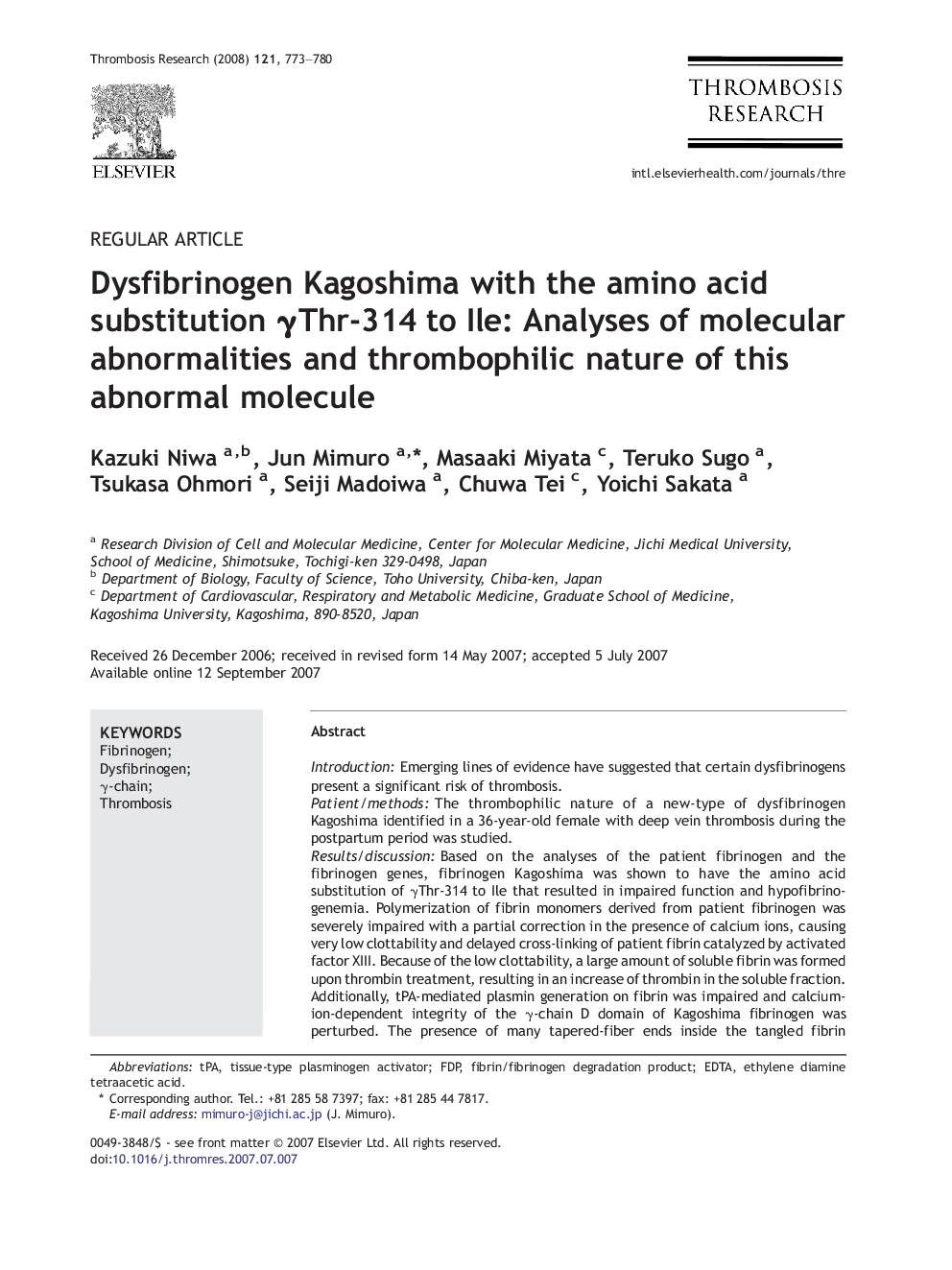| Article ID | Journal | Published Year | Pages | File Type |
|---|---|---|---|---|
| 3029978 | Thrombosis Research | 2008 | 8 Pages |
IntroductionEmerging lines of evidence have suggested that certain dysfibrinogens present a significant risk of thrombosis.Patient/methodsThe thrombophilic nature of a new-type of dysfibrinogen Kagoshima identified in a 36-year-old female with deep vein thrombosis during the postpartum period was studied.Results/discussionBased on the analyses of the patient fibrinogen and the fibrinogen genes, fibrinogen Kagoshima was shown to have the amino acid substitution of γThr-314 to Ile that resulted in impaired function and hypofibrinogenemia. Polymerization of fibrin monomers derived from patient fibrinogen was severely impaired with a partial correction in the presence of calcium ions, causing very low clottability and delayed cross-linking of patient fibrin catalyzed by activated factor XIII. Because of the low clottability, a large amount of soluble fibrin was formed upon thrombin treatment, resulting in an increase of thrombin in the soluble fraction. Additionally, tPA-mediated plasmin generation on fibrin was impaired and calcium-ion-dependent integrity of the γ-chain D domain of Kagoshima fibrinogen was perturbed. The presence of many tapered-fiber ends inside the tangled fibrin networks, observed by scanning electron microscopy, suggested early termination of fibrin polymerization and the structural alteration.ConclusionThese data suggest that fibrinogen Kagoshima is dysfunctional, giving rise to formation of fibrinolysis-resistant soluble fibrin polymers and entrance of soluble fibrin associating with thrombin to the circulation, partly accounting for the thrombophilic nature of the affected fibrinogen and fibrin molecules.
